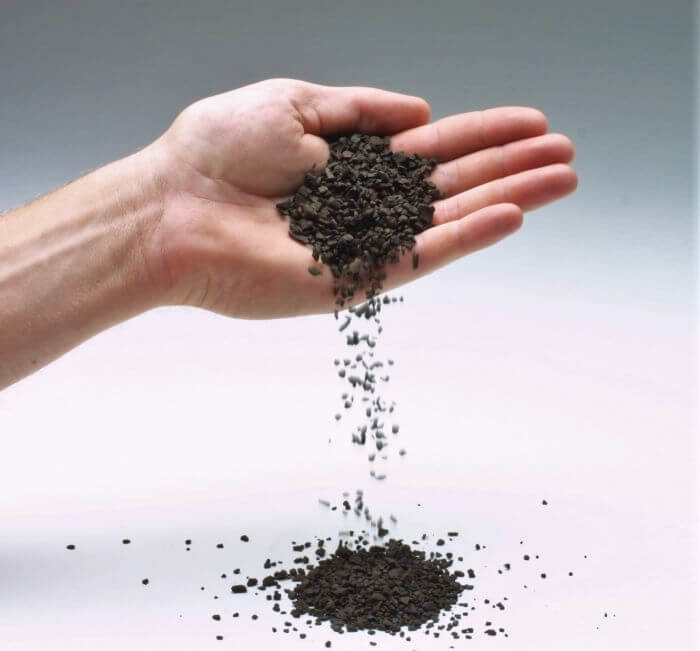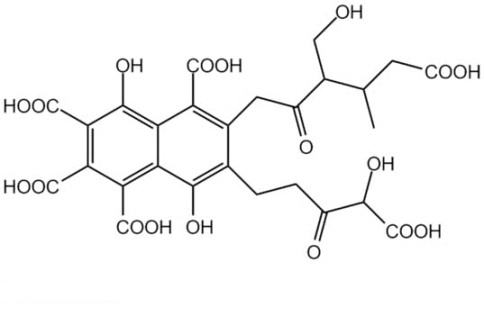“After I switched to humic soil conditioner, my crops looked healthier than ever,” said one neighbor. I saw the same results on my farm. Humic products changed my approach to agriculture. My soil felt richer, and the organic benefits became clear fast. Humic soil conditioner gave my soil health a boost, improved yields, and supported sustainable practices. I trust humic solutions for organic, sustainable agriculture because the benefits for soil health and plant vitality go beyond expectations.
Key Takeaways
- Humic soil conditioner improves soil structure by breaking up compacted soil, allowing roots to grow deeper and plants to become stronger.
- It boosts water retention in soil, helping crops stay healthy during dry spells and reducing the need for frequent irrigation.
- Using humic substances increases nutrient availability and retention, leading to better plant growth and higher crop yields.
- Humic soil conditioner supports organic and sustainable farming by promoting beneficial microbes and building long-lasting soil health.
- Farmers see faster plant growth, stronger stems, and healthier crops when using humic products, even under stress like drought or heat.
- Applying humic soil conditioner correctly is important; following product instructions and testing soil first helps achieve the best results.
- Both granular and water-soluble forms have benefits: granular for slow, steady soil improvement and water-soluble for quick plant boosts.
- Investing in humic soil conditioner can save money over time by reducing fertilizer and water needs while increasing farm productivity.
Why Farmers Use Humic Soil Conditioner
Soil Challenges
Structure Issues
I have seen firsthand how poor soil structure can hold back my farm’s potential. Compacted soil blocks roots and limits water movement. I use humic substances to break up these dense layers. Humic acid improves soil structure by increasing porosity and aeration. When I add humic soil conditioner, I notice the soil becomes easier to work with. Roots grow deeper, and plants look stronger. Good soil structure means better nutrient movement and more organic matter in every inch of my fields.
Water Retention
Water retention is a constant concern in agriculture. Dry spells can ruin crops if the soil cannot hold moisture. I rely on humic substances to boost water retention. Humic acid binds with organic matter, creating a sponge-like effect. This keeps water available for roots even during hot days. My fields stay green longer, and I use less irrigation. Improved water retention also means less runoff and more sustainable use of resources. I see the difference in plant health and yield every season.
Low Yields
Low yields used to frustrate me. I learned that poor nutrient retention and weak soil fertility were the main causes. Humic soil conditioner changed that. Humic acid increases the soil’s cation exchange capacity, which helps retain nutrients. My crops now get steady access to essential elements. I see better nutrient uptake, stronger growth, and higher yields. Humic substances also help bind toxic substances, protecting my plants from harm. With these improvements, my farm’s productivity has reached new heights.
Organic Solutions
Natural Improvement
I want my farm to thrive without relying on harsh chemicals. Organic matter and humic substances offer a natural path to better soil. Humic acid promotes beneficial microbial activity, which supports nutrient cycling and soil fertility. I see more earthworms and healthier root systems. Organic amendments like humic soil conditioner build up organic matter and improve soil structure. These changes last, making my soil more resilient year after year.
Sustainable Practices
Sustainability guides every decision I make. I choose humic substances because they support sustainable agriculture. Organic farming methods increase soil biodiversity and organic matter. Humic acid helps maintain soil fertility and water retention, reducing the need for synthetic inputs. I follow advice from other farmers who have seen the benefits of humic soil conditioner. Their recommendations convinced me to make the switch. Now, my farm uses fewer chemicals, saves water, and produces healthier crops. Sustainable practices with humic substances protect my land for future generations.
Tip: I always recommend starting with a soil test. Knowing your soil structure, organic matter content, and water retention capacity helps you get the most from humic soil conditioner and other organic amendments.
Farmer Reviews of Humic Soil Conditioner

Positive Experiences
Yield Increases
I have seen a real difference in my crop yields since I started using humic soil conditioner. My wheat fields produced more grain, and the protein content improved. I noticed this change after applying humic substances alongside my regular fertilizer. The roots grew deeper, and the plants looked stronger. My neighbor, who grows maize in Iowa, told me, “After using humic, my maize yield jumped by almost 30% during a dry year.” I trust these results because I see them on my own land. Scientific studies back up these stories. One study on wheat showed that humic substances increased nutrient uptake and grain yield, especially when the soil had low organic matter. Another multi-year trial in Iowa found that maize yields rose by up to 31% with humic product application, even in tough drought conditions. These results prove that humic soil conditioner can help crops thrive and deliver higher yields, especially when the weather turns against us.
Better Soil Health
Soil health matters most to me. I want my land to stay productive for years. Humic substances help me reach that goal. When I add humic soil conditioner, I see more earthworms and better soil structure. The soil feels softer, holds water longer, and smells richer. My plants show fewer signs of stress, and their roots spread wider. I talk to other farmers who use humic products, and they tell me the same thing. “My soil health improved after just one season,” said a vegetable grower from California. Research supports these claims. Humic substances boost microbial activity, increase organic matter, and improve nutrient cycling. These changes make the soil more resilient and help plants resist disease. I believe that investing in soil health with humic products pays off every season.
Plant Growth
Plant growth stands out as one of the biggest benefits I see from humic soil conditioner. My crops grow faster and look greener. I notice stronger stems, bigger leaves, and more flowers. The plants seem to handle stress better, whether it’s heat, drought, or pests. I use humic substances on everything from row crops to vegetables and fruit trees. The results impress me every time. Studies show that humic products can increase plant growth by an average of 20%. I see this in my fields, where plants reach maturity sooner and produce more. Healthy plant growth leads to better yields and higher profits. I recommend humic soil conditioner to any farmer who wants to see real improvement in plant health and growth.
Mixed and Negative Feedback
Limited Results
Not every farmer sees the same results with humic soil conditioner. Some of my friends tried humic substances and did not notice big changes in their crop yields or soil health. One farmer told me, “I used humic on my soybeans, but the yield stayed about the same.” Scientific reports confirm that positive experiences with humic products are often anecdotal. Comprehensive data comparing measurable outcomes is still lacking. Some soils, especially those already rich in organic matter, may not respond as strongly to humic amendments. I always remind others that results can vary based on soil type, crop, and weather.
Application Issues
Applying humic substances takes some practice. I made mistakes at first. I used too much in one spot and too little in another. Some farmers struggle with mixing water-soluble humic products or spreading granular forms evenly. One orchard owner said, “I had trouble getting the humic to dissolve in my irrigation system.” These issues can limit the benefits if not handled properly. I learned to follow the manufacturer’s instructions and adjust my equipment for even coverage. Good application makes a big difference in soil health and plant growth.
Cost Concerns
Cost matters to every farmer. Humic soil conditioner is an investment. Some farmers worry about the price, especially when budgets are tight. A small farm owner told me, “I want to use organic amendments, but the cost adds up fast.” I understand this concern. I look at the long-term benefits, like improved soil health, higher crop yields, and better plant growth. These gains often outweigh the initial expense. I suggest starting small and tracking results to see if humic substances deliver value on your farm.
Farmer Quotes
Row Crops
“Humic soil conditioner turned my corn around. The plants grew taller, and the ears filled out better than ever. I saw a real jump in yield.”
— Midwest corn farmer
Vegetables
“I use humic substances on my tomatoes and peppers. The plants look healthier, and the fruit is bigger and brighter. My customers notice the difference.”
— California vegetable grower
Orchards
“My orchard struggled with poor soil health. After adding humic products, the trees bounced back. I see more blossoms and better fruit set every year.”
— Georgia peach grower
Small Farms
“I run a small organic farm. Humic soil conditioner fits my sustainable approach. My soil holds water better, and my plants resist disease. I recommend it to anyone who wants to boost plant health naturally.”
— New York organic farmer
Note: Every farm is different. I always test new products on a small area first. I track soil health, plant growth, and crop yields before making big changes. Humic substances offer real benefits, but careful use brings the best results.
Application and Product Types
Granular vs. Water Soluble
Granular Use
I choose granular humic acid when I want a slow, steady improvement in my soil. I spread the granules directly onto my fields. The granules break down over time, releasing humic acid gradually. This method works best for long-term soil health. I notice that my soil structure improves, and my crops get a consistent supply of nutrients. Granular humic acid fits well into my regular fertilization routine. I can apply it before planting or during the growing season. I like that it stays in the soil and keeps working for months.
Water Soluble Use
When I need fast results, I turn to water soluble humic acid. I dissolve the powder in water and apply it through my irrigation system or as a foliar spray. Water soluble humic acid acts quickly. My plants absorb it right away, and I see greener leaves and stronger growth within days. This form is perfect for foliar feeding or when I want to boost nutrient uptake during critical growth stages. I also use water soluble humic acid in my greenhouse, where I need precise control over plant nutrition.
Application Methods
Soil Application
Soil application remains my go-to method for humic acid. I mix humic acid into the soil before planting or side-dress it during the season. This approach improves soil structure, increases cation exchange capacity, and boosts organic matter. I see more earthworms and better root growth. The table below shows how soil application of humic acid can improve nutrient release, microbial activity, and plant growth:
| Aspect | Details / Results |
|---|---|
| Nutrient release rates | N-NH4+: 280–430 μg g⁻1 d⁻1, P-PO4³⁻: 80–150 μg g⁻1 d⁻1, K⁺: 270–350 μg g⁻1 d⁻1 |
| Humic substances release | 350–480 μg g⁻1 d⁻1 |
| Soil quality improvements | Cation exchange capacity up 7%–85%, organic matter up 10%–58% |
| Microbial activity enhancement | Metabolic activity up 23%–39% |
| Plant growth effects | Clover length +41% to +76%, biomass +29% to +82% |
I trust soil application because I see lasting benefits in my fields.
Foliar Feeding
Foliar feeding with humic acid gives my plants a quick boost. I spray the solution directly onto the leaves. The plants absorb humic acid fast, which helps them recover from stress and grow stronger. I use this method during flowering or fruit set. Foliar feeding works best when I need to correct nutrient deficiencies quickly. I always follow label instructions to avoid leaf burn.
Irrigation Integration
I love using humic acid in my irrigation system. Water soluble humic acid dissolves easily and flows through drip lines or sprinklers. This method saves me time and ensures even coverage. My crops get humic acid right at the roots, where they need it most. I see better water retention and healthier plants. Irrigation integration fits perfectly into my regular watering schedule.
Dos and Don’ts
Common Mistakes
- I used to apply too much humic acid, thinking more would help. It did not. Overapplication wastes product and money.
- I sometimes forgot to mix water soluble humic acid thoroughly. This caused clogging in my irrigation system.
- I once applied humic acid during the hottest part of the day. The sun reduced its effectiveness.
Best Practices
- I always read the product label and follow recommended rates for humic acid.
- I test my soil before each season. This helps me decide how much humic acid to use.
- I apply granular humic acid before rain or irrigation. This helps it move into the soil.
- I dissolve water soluble humic acid completely before spraying or injecting it.
- I keep records of each application. Tracking results helps me fine-tune my approach.
Tip: Start small with humic acid. Test it on one field or crop. Watch for changes in soil health and plant growth. Adjust your methods based on what you see.
Results: Soil Health and Nutrient Impact

Soil Quality Changes
Texture
When I started using humic substances, I noticed my soil texture changed for the better. The ground felt softer and easier to work. Humic soil conditioner increased water-filled pore space, which made the soil less compact and improved soil structure. My plants could send roots deeper, and I saw more organic matter in every handful of earth. Over several years, I tracked these changes and saw a steady improvement in soil health and soil fertility. The soil held together well, resisted erosion, and supported stronger plant growth.
Microbial Activity
Healthy soil depends on active microbes. After adding humic substances, I saw a big jump in microbial activity. My soil tests showed higher microbial biomass carbon, nitrogen, and phosphorus. Enzyme activities like urease and catalase also increased. These changes meant my soil could break down organic matter faster and cycle nutrients more efficiently. I read studies that showed humic amendments boost beneficial fungi and bacteria, which help control pathogens and support plant growth. My fields became more resilient, and my plants looked healthier each season.
| Metric | Before Humic | After Humic (3-5 years) |
|---|---|---|
| Soil Organic Carbon | Low | Significantly higher |
| Microbial Biomass Carbon | Low | Increased |
| Enzyme Activities | Moderate | Much higher |
| Water-filled Pore Space | Limited | Improved |
Moisture
Water retention improved right away when I used humic substances. The soil acted like a sponge, holding moisture longer and making it available to plant roots. Even during dry spells, my crops stayed green and healthy. Humic soil conditioner helped reduce runoff and kept more water in the root zone. This meant I used less irrigation and saved money. Better moisture retention also supported microbial life and nutrient cycling, which boosted soil health and plant growth.
Nutrient Availability
Fertility Boost
Humic substances gave my soil a real fertility boost. They improved nutrient availability by chelating metals and making nutrients easier for plants to absorb. I saw more extensive root systems and better nutrient uptake. My crops responded with stronger growth and higher yields. Humic amendments accelerated the breakdown of plant matter, enriching the soil with organic matter and nutrients. I noticed that combining humic and fulvic acids led to even better results, with healthier plants and more productive fields.
- Humic acids improved soil water retention, ensuring consistent moisture for nutrient uptake.
- Microbial activity increased, breaking down organic matter and cycling nutrients faster.
- Toxic metals became less available, improving soil health.
- Plant residues decomposed quicker, raising soil fertility.
- Root systems grew larger, boosting nutrient uptake efficiency.
- Humic substances improved soil structure and nutrient availability, supporting long-term soil fertility.
Crop Response
My crops responded quickly to humic substances. I saw greener leaves, stronger stems, and more flowers. The plants grew faster and handled stress better. Yield increased, and the quality of my harvest improved. Studies showed that humic acid treatments changed soil microbial diversity, which helped plants access more nutrients. Fungal diversity increased, supporting healthy root systems and better nutrient cycling. When I combined humic substances with regular fertilizer, my peanut and maize yields went up, and the crops looked healthier all season.
Economic Impact
ROI
Investing in humic soil conditioner paid off for me. I spent less on fertilizers and irrigation because my soil held nutrients and water better. My yields increased, which meant more profit at harvest. Improved nutrient cycling and water retention lowered my input costs. I calculated my net benefit as the yield increase minus the cost of amendments. The numbers showed a clear return on investment. Government programs even offered incentives for soil health practices, making the switch easier.
Long-Term Benefits
The long-term benefits of humic substances became clear after a few seasons. My soil health improved, and my land became more productive year after year. I saw less erosion, better water infiltration, and fewer crop losses during droughts. These changes made my farm more resilient and profitable. Healthy soil supported sustainable practices and protected my investment for the future. I believe that focusing on soil health with humic amendments is the best way to ensure long-term success.
Note: Healthy soil is the foundation of a successful farm. Humic substances deliver real, measurable benefits for soil health, nutrient availability, and economic returns. I encourage every farmer to try humic soil conditioner and see the difference for themselves.
I have seen humic soil conditioner transform my farm. Humic products boost soil health, increase yields, and help plants thrive. Many farmers share stories of better soil, stronger crops, and lasting health improvements. Some face challenges, but I believe humic solutions offer real value. I always test humic products on my own fields. If you want better soil and plant health, try humic soil conditioner. As one farmer said, “Healthy soil starts with humic.”
FAQ
What is humic soil conditioner, and why should I use it?
I use humic soil conditioner to boost soil health and fertility. It contains humic acid and organic matter that improve soil structure, water retention, and nutrient availability. My plants grow stronger, and I see better crop yields every season.
How does humic acid improve soil structure and water retention?
Humic acid breaks up compacted soil and increases porosity. I notice my soil holds water longer, which helps with drought resistance. This improved water retention supports healthy plant growth and reduces the need for frequent irrigation.
Can I use humic soil conditioner with other soil amendments or fertilizers?
Yes, I combine humic soil conditioner with other organic amendments and fertilizers. It enhances nutrient uptake and makes my soil more fertile. My crops respond with better growth and higher yields. I always follow recommended rates for best results.
Is humic soil conditioner safe for organic agriculture?
Absolutely. I trust humic soil conditioner because it comes from natural organic matter. It fits perfectly into my sustainable farming practices. I use it to build soil fertility and support long-term sustainability on my farm.
How soon will I see results in plant health and crop yields?
I usually see improvements in plant health within weeks. Crop yields increase after one or two seasons. Consistent use of humic substances and organic amendments leads to lasting benefits for soil and plants.
What is the best way to apply humic soil conditioner?
I apply granular humic soil conditioner directly to the soil for slow-release benefits. For quick results, I use water-soluble forms in irrigation or as a foliar spray. I always test on a small area first to track plant growth and soil health.
Does humic soil conditioner help with nutrient availability and retention?
Yes, humic soil conditioner increases nutrient availability and retention. My soil holds nutrients longer, and my plants absorb them more efficiently. This leads to healthier crops and improved yields.
Can humic soil conditioner support sustainability and long-term soil fertility?
Definitely. I rely on humic soil conditioner to build organic matter, improve soil structure, and promote sustainable agriculture. My soil stays fertile, and my farm remains productive year after year.
Tip: I always recommend starting with a soil test. Knowing your soil’s needs helps you get the most from humic soil conditioner and other amendments.






